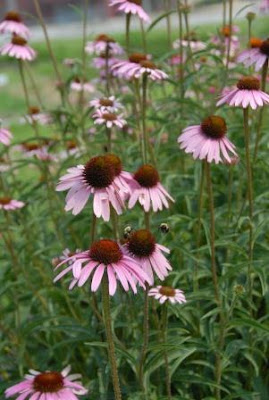That said, many property owners -- whether farmers, hunters, timber investors, or none of these -- could do so much for pollinators if they would simply make room for them. Wildflowers thrive in the buffer zones, areas between plantings, creek banks, ditches, field margins, and roadsides. Richard at The Peace Bee Farmer writes poetically about the wildflower meadow they planted last year -- just one acre, but it's a haven for all sorts of winged creatures.
Mark is investigating prairie restoration projects for some land he helps manage, which would involve native wildflowers over several acres. I hope it will become a reality, not only because I think some of our bees would be very happy there, but because wild pollinators, who need all the help they can get, would find a beautiful sanctuary.
How can you make room for bees where you are?
- if you have unwanted bees in your house or on your property, call a beekeeper, not an exterminator
- plan this winter for your spring pollinator garden
- allow room for wildflowers on the edges of your property
- preserve creek banks by not harvesting timber or planting/harvesting crops all the way to edge. Leave a buffer zone!
- plant a prairie garden (this is from Minnesota) or wildflower meadow (this is for MS)
- take up beekeeping! Seriously, having two hives will bring you a lot of enjoyment. You don't have to be like us and expand from 6 to 22 . . . with plans to go to 50 in the spring.
- lobby for bee-friendly zoning ordinances so people in urban areas can keep bees
- work with your local garden club or school to create a pollinator garden
- plant pollinator-friendly plants -- herbs, flowers, milkweed, etc.


No comments:
Post a Comment